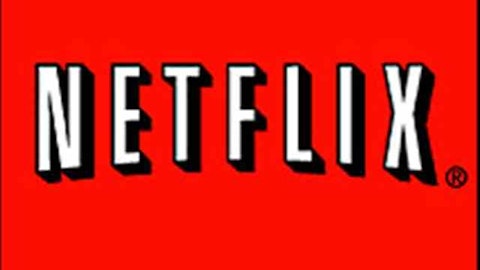When chipmaker NVIDIA Corporation (NASDAQ:NVDA) recently released its second-quarter results, it became clear that the company is struggling. It was not surprising to see the company’s revenue and earnings fall from the year-ago period, given the fact that the PC market has been on shaky ground and NVIDIA’s mobile initiative has failed to take off — rather it’s going downhill at the moment.

It is true that NVIDIA witnessed an 8% increase in revenue from its graphics processing unit (GPU) business, driven by the strength of its Kepler-based GPUs, but the fact that the overall PC market is declining cannot be overlooked. PC shipments slumped almost 11% in the June quarter, which means that NVIDIA Corporation (NASDAQ:NVDA)’s GPU business is growing in a market that’s actually shrinking.
However, the company is witnessing robust growth in its workstation and server GPU segments, the Quadro and the Tesla, respectively. However, the desktop GPU business has been climbing at a slow pace, growing 3.9% in the previous quarter. And when we come to the segment that was expected to be the next big growth driver of NVIDIA, the Tegra processors, things will look even worse.
A massive decline
Revenue from Tegra slumped alarmingly in the previous quarter, dropping a catastrophic 71% from the year-ago period to just $52.6 million. Well, then again, this is not at all surprising. The company lost its slot in those few major devices where it had managed to place its Tegra processor the last time — HTC’s flagship smartphone and the Google Inc (NASDAQ:GOOG) Nexus. NVIDIA fell behind the curve in integrating 4G LTE into its processor and QUALCOMM, Inc. (NASDAQ:QCOM) snapped up its key customers.
For instance, Google had selected NVIDIA Corporation (NASDAQ:NVDA)’s Tegra for the first generation Nexus 7, and the chipmaker’s happiness knew no bounds after it landed the design win. However, Google Inc (NASDAQ:GOOG) went with the Qualcomm Snapdragon Pro for the 2013 Nexus 7. This loss could be a major one for NVIDIA, as it further pushes it back in mobile processors and strengthens QUALCOMM, Inc. (NASDAQ:QCOM)’s hold.
Google Inc (NASDAQ:GOOG) was able to ship six million units of the first Nexus 7 in a year, and sources are expecting the current one to ship 3.5 million units this year. Reviewers put the current Nexus tablet ahead of its closest competitor, the iPad mini as it is cheaper and has a better screen, and this might lead to even better sales. But sadly, NVIDIA won’t be a part of the ride this time.
Behind the curve
NVIDIA is still optimistic that its Tegra 4 processor will bring back its mobile glory, and the drop in shipments in the previous quarter was due to a transition from Tegra 3 to the newer version. But, going back in time, one would see that this is not the first time that transition is hurting NVIDIA Corporation (NASDAQ:NVDA).
Early last year, the transition from Tegra 2 to Tegra 3 had hurt sales. Well, when you release a chip and then again you state that you’re going to release a better one with LTE, why will customers buy the older one! The company seems to have tinkered too much with the Tegra, and the fact that its 4G integrated chip has been late to the market has handed the initiative to QUALCOMM, Inc. (NASDAQ:QCOM).
Not enough firepower
So, while NVIDIA CEO Jen-Hsun Huang might call the previous quarter a trough for NVIDIA, I doubt that it’ll be able to succeed much in mobile, as long as it doesn’t land serious design wins. And that hasn’t been the case so far; in fact, as mentioned earlier, NVIDIA has lost key accounts. Google Inc (NASDAQ:GOOG) moving to Qualcomm for the Nexus wasn’t because of a Tegra transition, but probably because QUALCOMM, Inc. (NASDAQ:QCOM) offered the better chip when Google needed it.
Google Inc (NASDAQ:GOOG) wouldn’t have waited for NVIDIA Corporation (NASDAQ:NVDA) to integrate LTE into its chip, and given the fact that the Snapdragon 800 outpaced the Tegra 4 in GPU performance, things don’t look rosy for NVIDIA going forward. Moreover, management’s optimism regarding a ramp up of Tegra 4 in the current quarter seems based on tablets from the likes of Asus, Toshiba, and Hewlett-Packard Company (NYSE:HPQ), which isn’t exactly something to be too excited about.
And these design wins would seem mediocre when you stack them up against Qualcomm’s fifty design wins for the Snapdragon 600 and 800 processors. Considering QUALCOMM, Inc. (NASDAQ:QCOM)’s hegemony in the mobile baseband market and its cutting-edge innovation, it remains to be seen if the 4G modem-integrated Tegra 4i can succeed.
So, with NVIDIA’s famed Tegra initiative faltering as of now, the company is now effectively dependent on its traditional GPU business for growth, which doesn’t bode well since overall revenue declined in the previous quarter as Tegra slumped. And even there, the competition is present as the likes of Intel Corporation (NASDAQ:INTC) would provide a fight to NVIDIA’s GRID datacenter initiative with its own “Reimagine the Data Center.”
The takeaway
NVIDIA Corporation (NASDAQ:NVDA)’s guidance for the ongoing quarter was a disappointment, and even if the company achieves the mid-point of its revenue guidance, i.e. $1.05 billion, it would still be a double-digit decline from last year. The bottom line is that NVIDIA is in trouble and investors can do better by putting their money somewhere else.
Harsh Chauhan has no position in any stocks mentioned. The Motley Fool recommends Google and NVIDIA. The Motley Fool owns shares of Google and Qualcomm.





